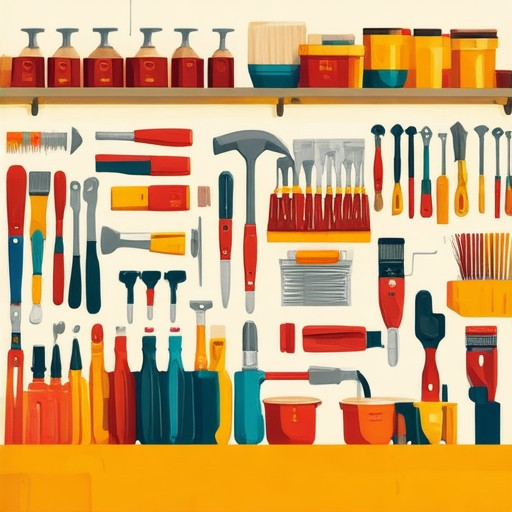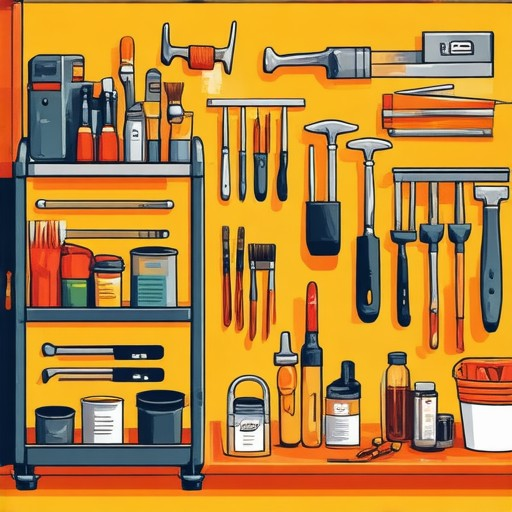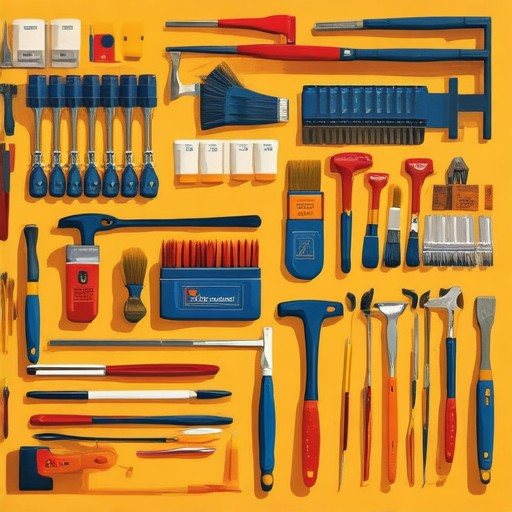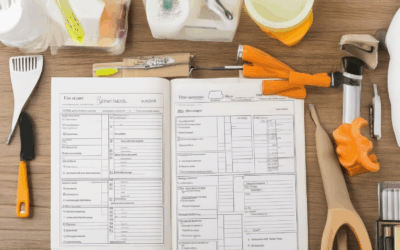Thinking about diving into DIY home renovations but aren’t sure where to start? Many homeowners underestimate how many simple tasks they can handle themselves, especially when it comes to basic repair projects. Whether you’re looking to refresh your space or tackle something more substantial, there’s a world of possibilities for those willing to roll up their sleeves. From fixing leaks and patching walls to installing new fixtures or even remodeling smaller areas, DIY projects can save you time and money while giving you a sense of accomplishment. But before you jump into anything, it’s crucial to assess your skills, set realistic goals, and gather the right tools. With the right guidance, you’ll be well on your way to transforming your home into a space you’ll be proud of. So why wait? Let’s explore how you can approach DIY projects with confidence and ease, ensuring your efforts yield results that enhance both functionality and aesthetics.

Home Renovations You Can Do Yourself
Whether you’re a seasoned DIY enthusiast or new to home improvements, there are plenty of projects you can tackle yourself to enhance your living space without breaking the bank. Here’s a curated list of manageable home renovation ideas:
- Painting Walls : Refresh your space with a new coat of paint. Gather essential tools like paint, brushes, ladders, and drop cloths, and follow online tutorials for a professional finish.
- Fix Leaky Faucets : Replace worn-out washers or adjust the faucet handle. Basic plumbing fixes can save you from costly professional services.
- Furniture Repair : Touch up scratched surfaces or repair damaged wood. Use sandpaper and finishes to restore your furniture to its former glory.
- Cabinet Knob Replacement : Update your kitchen or bathroom with new handles or knobs. Simply remove the old ones and install the new ones, ensuring they match your decor.
- Grout Repair : Fix cracked grout around your shower or tiles. Remove old grout, clean the area, and apply new grout for a seamless look.
- Light Fixture Replacement : Enhance your space with modern lighting. Disconnect old fixtures, install new ones, and ensure proper wiring for safety.
- Deck Board Replacement : Replace rotten or warped boards. Use a saw and measuring tape to cut new boards and stain them for a polished look.
- Garage Organization : Install pre-fabricated shelves or hooks to store tools and gadgets, transforming your garage into a functional space.
- Landscape Projects : Tackle garden pruning, mowing, and planting to create a more inviting outdoor space. Use the right tools and plan your tasks accordingly.
Start with smaller projects to build confidence, then progress to larger tasks. Always gather tools and materials beforehand, watch tutorials for guidance, and prioritize safety with protective gear. Enjoy the rewarding experience of transforming your home while saving costs!
Is DIY Really Worth It?
DIY projects can be a rewarding experience, offering personal fulfillment and the chance to customize your space. However, whether it’s worth it depends on your goals, skills, and circumstances.
Pros of DIY
- Saving Money: Many DIY projects allow you to create items for a fraction of the retail price. Tools and materials can often be sourced affordably, especially through local hardware stores or online marketplaces.
- Creative Expression: DIY gives you the freedom to personalize your environment, whether it’s a room makeover or a custom piece of furniture.
- Skill Development: Engaging in DIY projects can enhance your problem-solving abilities and craftsmanship, making you more confident in tackling future projects.
- Emotional Satisfaction: Completing a DIY project can boost your mood and sense of accomplishment, making it a valuable mental health activity.
Considerations Before Starting
- Time Investment: DIY projects require time and effort, which might be a trade-off if you’re short on time or prefer convenience.
- Tools and Materials: DIY may require purchasing specialized tools or materials, which can add to the upfront cost.
- Learning Curve: Depending on the complexity of the project, you may need to learn new techniques or gather research beforehand.
When to Choose DIY
- If you enjoy hands-on work and have basic tools, DIY can be a great way to save money and personalize your space.
- For small-scale projects like repurposing furniture or creating decorative items, DIY is often the most efficient choice.
- If you’re looking to develop new skills or want a unique gift, DIY offers a personalized touch that store-bought items can’t match.
When to Consider Store-Bought Alternatives
- If time is a luxury you don’t have, store-bought options might be more convenient and less stressful.
- For complex projects requiring precise measurements and professional finishes, pre-made products might be more reliable.
- If you’re unsure about your DIY skills, starting with simple projects and gradually building confidence can be a smart approach.
Ultimately, the decision to DIY depends on your individual preferences and priorities. Whether it’s saving money, expressing creativity, or gaining new skills, DIY can offer significant benefits when approached thoughtfully.

Home Projects That Add the Most Value
When it comes to home improvement projects, certain initiatives can significantly enhance your property’s value and provide long-term benefits. Here are some of the most valuable projects to consider:
- Kitchen Remodel : One of the top projects for adding value, a kitchen remodel can improve functionality and aesthetics. Upgrading cabinets, countertops, and appliances can yield a high return on investment.
- Bathroom Renovation : Similar to the kitchen, bathrooms are highly functional areas that can greatly benefit from renovations. Modernizing fixtures, tiles, and layouts can enhance both usability and visual appeal.
- Smart Home Integration : Installing smart home technology can streamline daily life and add convenience. Features like automated lighting, security systems, and energy management can also appeal to tech-savvy buyers.
- Energy Efficiency Improvements : Projects focused on reducing energy consumption, such as installing solar panels or upgrading to energy-efficient appliances, can lower utility costs and attract environmentally conscious buyers.
- Outdoor Living Spaces : Expanding outdoor areas with decks, patios, or pergolas can create versatile spaces for entertaining and relaxation. Landscaping can also significantly boost curb appeal.
- Replacement Windows and Doors : New windows and doors can improve insulation, reduce energy loss, and enhance the home’s aesthetic. They also contribute to a more contemporary look.
- Pools and Spas : Adding a pool or spa can be a major draw for potential buyers, particularly in regions with warm climates. However, this project requires careful consideration of local regulations and market demand.
- Interior Design Updates : Modernizing lighting, flooring, and wall treatments can create a more inviting and updated interior. Open floor plans and added storage solutions are also desirable features.
- Garage Conversions : Converting a garage into usable space, such as a bedroom or office, can add significant value to your home. This project is particularly appealing to families needing extra room.
- Landscaping and Outdoor Features : Well-designed landscaping can enhance curb appeal and create an inviting exterior environment. Features like garden beds, walkways, and outdoor seating can add value and charm.
Smaller-scale projects, such as freshening up paint jobs or planting lush greenery, can also make a noticeable difference. Prioritize projects based on your personal preferences and lifestyle needs to maximize both functionality and aesthetic appeal.

Are DIY Projects Cheaper?
Yes, DIY projects can often be cheaper than hiring professionals for certain tasks. The cost difference largely depends on several factors, including material prices, labor rates, and the complexity of the project.
Factors Influencing DIY Costs
- Material Costs: DIY allows you to shop around for the best prices on materials, potentially saving significant money compared to contractor markups.
- Labor Costs: Hiring professionals can add 50% or more to the total project cost due to labor fees. DIY eliminates this expense entirely.
- Project Complexity: Simple projects like painting or minor repairs may cost less when done yourself, while complex renovations could save money too, depending on your skills and tools.
- Tool Ownership: If you already own necessary tools, you can save on rental or purchasing costs associated with professional work.
Advantages of DIY Projects
- Saves Money: Eliminating labor costs can significantly reduce overall expenses.
- Skills Development: DIY projects allow you to learn new skills and gain confidence in home maintenance.
- Customization: You have full control over the final outcome, allowing for personalized touches.
- Environmental Impact: Reducing waste and minimizing the need for new materials can contribute to a more sustainable lifestyle.
Considerations Before DIY
- Time Investment: DIY projects take time, and may require more effort than expected.
- Tool Costs: Purchasing tools can be an upfront expense, though they often pay off over time.
- Permits and Regulations: Some projects may require permits or inspections, which can add to the process.
Conclusion
Diy projects can indeed be cheaper, but it’s essential to weigh the savings against your time, skill level, and the tools you currently have. For more guidance on getting started, check out our maintenance guide and explore our tools section for recommended equipment.
Disadvantages of DIY
- Time Constraints: DIY projects often require more time than anticipated, especially for those without prior experience.
- Cost of Tools and Materials: Acquiring necessary tools and materials can be expensive upfront.
- Risk of Damage: Incorrect techniques can lead to further damage or costly repairs.
- Labor Intensive: DIY tasks may be physically demanding and time-consuming, particularly for those less experienced with manual labor.
- Emotional Disappointment: Starting a project and not completing it can lead to frustration and disappointment.
- Learning Curve: Without prior experience, DIY projects can present unexpected challenges and mistakes.

Is It Cheaper to Renovate a House or Build from Scratch?
Determining whether it’s cheaper to renovate a house or build from scratch depends on several factors, including the scope of the project, the condition of the existing property, and personal preferences.
Factors Influencing Cost
- Renovation Costs: Renovating an existing house can be less costly if the changes are limited to cosmetic updates or smaller structural modifications. However, significant upgrades to systems like plumbing, electrical, or HVAC can increase expenses.
- Building from Scratch: Constructing a new house provides the opportunity to start fresh, which can eliminate many existing structural issues. However, this process is generally more expensive due to the need for new materials, labor, and permits.
- Condition of the Home: If the existing house is outdated or in poor condition, the renovation costs may approach or exceed the cost of building anew. Conversely, if the home is in good shape, renovations might be more economical.
- Permits and Regulations: Renovations often require permits, while new constructions typically involve more extensive permitting processes, which can add to the overall cost.
When to Choose Renovation
- If you prefer the existing layout and structure of your home.
- If you don’t want to deal with the uncertainty of discovering structural issues during construction.
- If you plan to stay in the home for the long term and don’t mind living through the renovation process.
When to Consider Building from Scratch
- If you have custom design preferences that can’t be accommodated in an existing space.
- If you want a truly energy-efficient and modern home with the latest features.
- If you’re building on a new piece of land with no existing structures nearby.
Conclusion
The choice between renovating and building from scratch ultimately depends on your priorities, budget, and the specific needs of your project. Consulting with a professional contractor and architect can provide you with a clearer understanding of which path is most feasible and cost-effective for your situation.




0 Comments